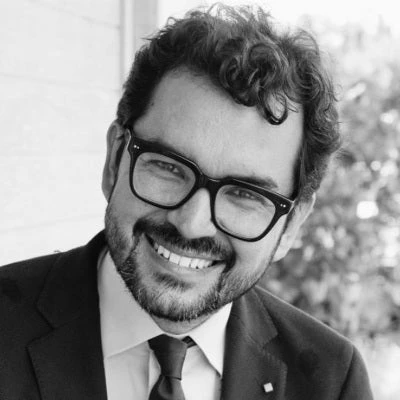 Guinea's Simandou Project promises economic transformation, but the country's long-term success requires investment in education and youth skills. Photo credit: Vincent Tremeau / World Bank.
Guinea's Simandou Project promises economic transformation, but the country's long-term success requires investment in education and youth skills. Photo credit: Vincent Tremeau / World Bank.
Guinea is rich in natural resources, but can it turn its ‘mining boom’ into long-term prosperity? As the country embarks on the transformative Simandou Project, it stands at a crossroads of opportunity. The Simandou 2040 initiative holds the potential to drive significant economic growth and promote socioeconomic development. Yet, the true measure of success will depend on how well Guinea invests in its most valuable asset: its people.
Investing in quality education and skills is essential for Guinea’s sustainable development. A well-prepared population can drive economic diversification and reduce dependence on natural resources. Without such investment, the mining sector could distort the economy by drawing labor and capital away from other sectors. To avoid this, Guinea must equip its youth with the skills needed to boost productivity and support growth across industries.
Equipping Youth for the Future: Foundational, Digital, and Technical Skills
To build a productive workforce, Guinea must prioritize a wide range of skills—from foundational literacy and numeracy to digital and technical capabilities at all levels as skills build upon each other. These are essential not only for formal employment but also for enhancing productivity in informal sectors. Soft skills, such as teamwork, adaptability, grit, further complement today’s youth to engage in productive activities.
To achieve this, however, significant barriers remain. Guinea’s adolescents, especially young women, face considerable challenges in accessing education and training opportunities. These are reflected in the country’s high rate of NEETs (Not in Education, Employment, or Training). Alarmingly, 34% of Guinea’s youth fall into this category—a figure that represents at least 611,000 individuals, including 420,000 young women.
Rural areas face even higher rates of NEET, with 50% of rural young women classified as NEET, compared to 31% of rural young men. These disparities perpetuate cycles of poverty, exacerbate gender inequality, and limit economic productivity in a country where 62% of the population resides in rural areas.
Skills for All
The high NEET rates and their gender gaps stem from low enrollment across education levels and are compounded by socio-cultural factors such as adolescent girls’ early marriage and high early pregnancy rates. In 2018, 34% of primary school-aged children, 42% of lower secondary-aged children, and 62% of upper secondary-aged children were not attending school. Alarmingly, 37% of children—42% of girls and 32% of boys—have never attended school.
Girls face particularly acute barriers. The gross enrollment rate for girls at the lower secondary level is just 33%, compared to 45% for boys. Additionally, 41% of girls are married by age 18, and in rural areas, 42% are already mothers. These factors significantly hinder their ability to continue education and develop the skills necessary for future employment and economic participation.
Early Learning and the Foundations of Success
Guinea faces educational challenges from the start. With only 20% of children in preschool and 56% of six-year-olds in first grade (2022), many begin school unprepared. This lack of early learning leads to higher dropout rates, especially among girls. Primary education also suffers from poorly trained teachers and limited resources—19% lack basic math skills, and over half of primary school graduates can’t read proficiently. These issues drive Guinea’s high learning poverty and signal the need for urgent reforms.
The Perceived Value of Education
Low education quality—both actual and perceived—is a significant barrier to school enrollment, particularly for girls. Parents are less likely to send their children to schools characterized by unqualified teachers, poor infrastructure, and weak learning outcomes. This lack of trust in the education system drives a substantial proportion of students to private schools, with 36% of primary students and 55% of secondary students attending private institutions. In addition, entrenched social norms towards education further diminish the perceived value of education for girls’ parents. Alternative pathways to adulthood, such as early marriage, often take precedence over schooling when these factors intersect.
The Role of Education Spending
At the heart of Guinea’s educational challenges lies insufficient public investment in education. This low level of funding has resulted in systemic inefficiencies, such as uneven teacher deployment and training, inconsistent school budgets, and significant infrastructure gaps for secondary education, particularly in rural areas. Adolescent girls and boys are disproportionately affected, leaving them without the necessary skills to actively participate in and benefit from the labor market in the near future.
To unlock Guinea’s potential and support equitable economic growth, the country must invest in human capital systems that strengthen education and skills across the life cycle. By doing so, Guinea can prepare its youth of today and tomorrow to contribute to a diversified economy and a sustainable future.
As the Simandou Project reshapes Guinea’s economy, the focus must remain on mining not just the country’s natural resources but also its human capital. Equipping the next generation with the skills they need to become productive members of society is the most sustainable and equitable investment the country can make—one that promises not only economic returns but also social progress.
Aware of these challenges and opportunities, the government plans to allocate a significant share of Simandou’s revenues to education and skills development. This marks a crucial shift—from mining mineral wealth to “mining” human capital for long-term productivity and growth.






Join the Conversation